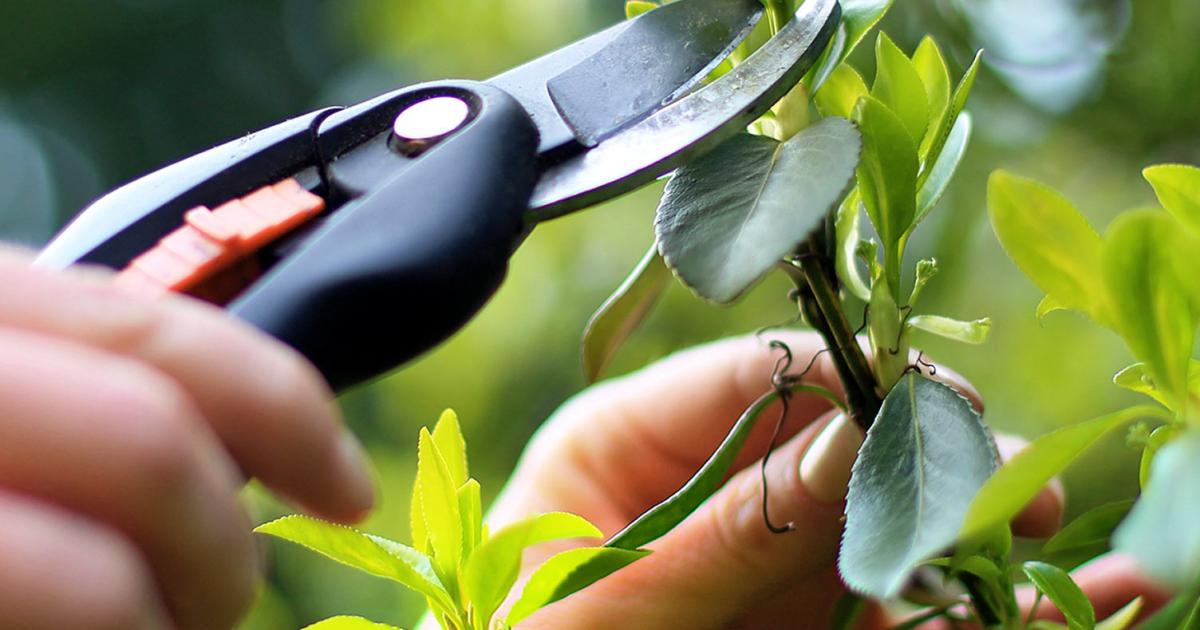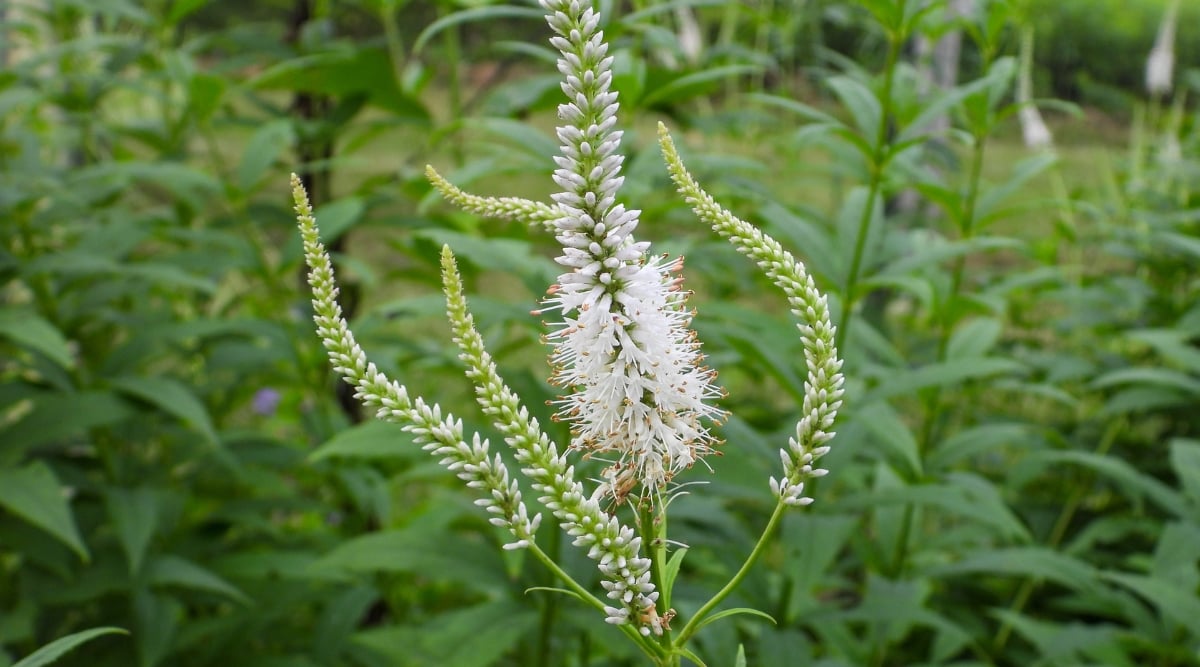Are you interested in cultivating Culver’s root? This native wildflower has gained popularity in recent years, and it’s easy to see why. It’s easy to grow, low-maintenance, and nearly problem-free.
Culver’s root, scientifically known as Veronicastrum virginicum, is a perennial wildflower native to North America. It thrives in meadows, open woodlands, and moist prairies across the central and eastern United States and Canada. In home gardens, it’s a versatile plant that performs best in sunny spots with moist soil.
Typically, it grows to about four to five feet in height, though it can sometimes reach up to six feet. In late spring and early summer, it produces a striking display of tall flower spikes. While the native plant usually has white flowers, several cultivars offer blooms in beautiful shades, ranging from soft smoky pink to vibrant lavender-blue.
In landscaping, Culver’s root fits well in various designs. Its love for wet soil makes it an excellent choice for planting near water bodies or in moist areas at the base of a hill. Its showy flowers not only attract pollinators but also make excellent cut flowers, adding diversity and structure to gardens.
If you have a suitable space, this plant will not disappoint. Let’s explore more about caring for and incorporating this stunning wildflower into your landscape.
Natural History
Culver’s root is native to central and eastern North America, from Texas to Florida and north into Canada. It typically grows in prairies, moist meadows, open woodlands, and along sunny streambanks.
This plant is a key species in moist prairies and grasslands, especially in the Midwest and Northeast. It plays an important role in local ecosystems and supports native pollinators.

Historically, Culver’s root was used for medicinal purposes. The dried rhizomes were traditionally prepared to treat various ailments, and it is still available today as an herbal remedy.
Characteristics
Culver’s root blooms from late spring to mid-summer. Its flowering stems produce multiple long, slender spikes packed with tiny white flowers. Each flower is tubular, about one centimeter long, and they open progressively from the bottom of the spike to the top, giving the plant a long blooming period.
While native varieties have white to pale purple or blue flowers, cultivars offer a wider range of colors, including soft pink and deep lavender-purple.

After the first bloom, you can trim the spent flower stems down to the leaves, and with luck, you may get a second bloom in the fall. Though the second bloom might not be as vigorous, it still provides additional beauty and sustenance for pollinators.
Propagation
If you have access to a mature plant, there are several methods to propagate Culver’s root. These plants are also often available at nurseries and greenhouses specializing in native plants.
From Seed
Culver’s root can be grown from seed. You can collect seeds in the fall from established plants or purchase them from a reputable supplier. The seeds need cold, moist stratification to germinate.

The best time to sow is in late fall. Scatter the seeds on the ground where you want them to grow and press them into the soil. Since the seeds are tiny and need light to germinate, do not cover them. Keep the soil moist until germination.
After overwintering, the seeds will naturally sprout in spring. To protect the young plants, place a critter cage over them to keep squirrels at bay. For extra insulation during cold snaps, you can cover the cage with a frost blanket.

Division
Dividing mature plants is the easiest way to propagate Culver’s root. This can be done in late fall or early spring. Dig out a section of healthy rootstock, ensuring you include some buds or stems.
You can divide the rootstock into two parts, replanting half in another location. You might also share divisions with friends interested in native plants, offering them a new start in their gardens.

Cuttings
In spring, you can try propagating Culver’s root through cuttings by taking a few softwood cuttings. Use clean, sharp clippers to cut a four to six-inch stem with fresh spring growth.
Remove the leaves from the lower two inches of the cutting and dip this section into a rooting hormone. Place the cutting in a pot filled with fresh, clean soil. Keep the pot in a warm, sheltered location, ensuring the soil stays moist but not overly wet.

Within a few weeks, the cutting should develop roots. You’ll know it’s successful when new growth appears at the top. Since not all cuttings will root, take two or three to increase the chances of at least one succeeding.
Transplanting
Once your cutting has rooted or if you’ve purchased a young plant from a garden center, you can transplant it into your garden. Choose a sunny spot with consistently moist soil for best results. Early spring or fall is the ideal time to transplant perennial wildflowers.

Dig a hole that’s slightly deeper and wider than the plant’s root ball. Gently remove the plant from its pot and place it into the hole, ensuring that the plant’s soil level matches the surrounding ground.
Fill in the hole with soil, firming it down around the roots and stem. Water the newly transplanted plant thoroughly, and keep it moist for the next few weeks to help it settle in.

In landscaping, Culver’s root is versatile. Its preference for wet soil makes it ideal for areas near water features or at the base of slopes. Its vibrant flowers attract pollinators, work well as cut flowers, and bring structure and variety to garden designs.
If you have the right conditions, this plant will be a beautiful addition to your landscape.
Final Thoughts
Whether you’re propagating from seeds, cuttings, or divisions, this low-maintenance plant will reward you with years of beauty and ecological benefits. If you’re looking for a plant that offers both aesthetic appeal and environmental value, Culver’s root is an excellent option to consider.
